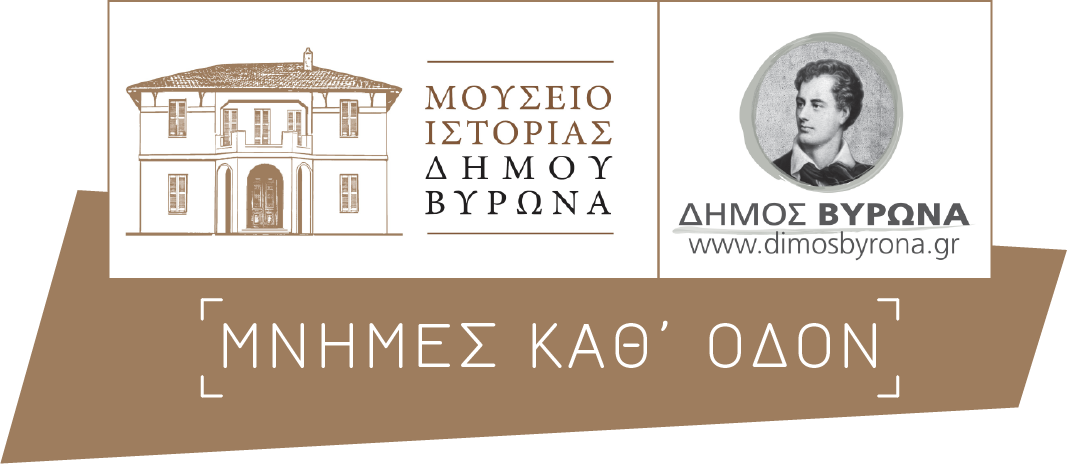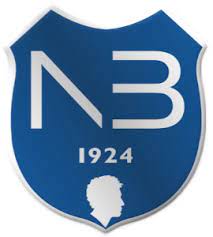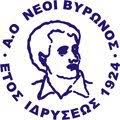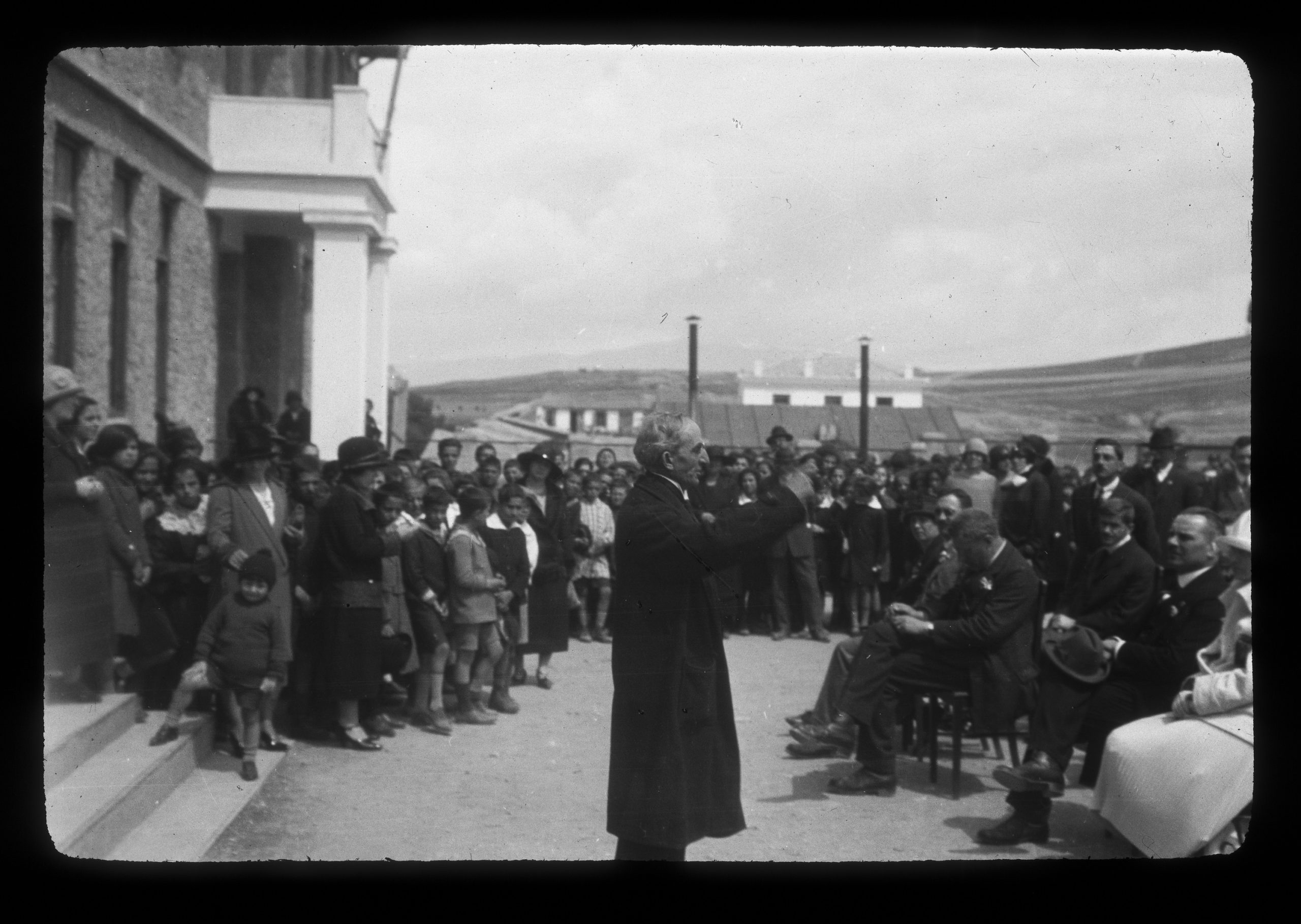The Athletic Club “Neoi Vyronos” (Youngsters of Vyronas)
Messolongiou and Erythraias
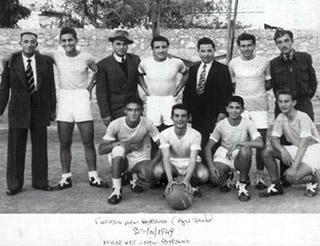
Athletes competing in 1949
The athletic clubs and associations constituted an important element of the social life of the Orthodox Christians in Asia Minor, particularly in the urban areas. This tradition was transferred to the new homeland, where the need for social cohesion and coordinated action was even bigger. The Athletic Club “Neoi Vyronos” was the first athletic association created in the settlement of Vyronas in 1924. Their emblem became the figure of Lord Byron, which later constituted also the badge of the municipality itself.
- The new badge of “Neoi Vyronos”
- The old badge of “Neoi Vyronos”
- Gregory Lambrakis in a dirt track contest (long jump) in which he excelled
- Inaugural ceremony of the 1st Primary School of Vyronas. In the background one can see the Siafakas’ courtyard.[source: PHZH Forschungsbibliothek Pestalozzianum]
During the first decade of its function, the club had a football team, which initially participated in panhellenic contests, but later on its activity faded out. Other sports, such as basketball, volleyball and handball, attracted from the beginning many good athletes. The Club excelled in these sports throughout the Interwar period. Furthermore, the womens’ track sports were also enhanced, a fact that reflects the progressive tendencies of the refugees from Asia Minor. Cycling was also important throughout the Interwar period and cycling contests were organized in streets and other areas of the settlement. In 1928 the “Neoi Vyronos” co-organized adolescents’ games in the Panathenaic stadium, thus instigating the adolescents’ category of athletic games. Nowadays, the activity of the Club focuses mainly on basketball and volleyball, but there are is also a chess department.
The atletic clubs, particularly during the interwar period, did not have a purely athletic profile. They served as gathering nuclei for the citizens and organized also several events of a cultural character (such as theatrical performances, concerts and lectures). This was the profile of all the athletic clubs and associations of Vyronas, such as Heracles Vyronos, Ares, Hermes Vyronos, Hellespont, "Hyperochi (Excellence)" etc. Most of these clubs did not survive after ther war, whereas others had to change or mingle.
Additional information
Gregory Lamprakis, a doctor and major politician of the left wing in the post-war period, was not an Asia Minor refugee. However, he was an athlete and in fact he had achieved many victories in the Balkan athletic contests. In the 1950s he undertook the medical care of the athletes following a suggestion by his friend G. Thanos, also an athlete, who had taken refuge on the premises of Neoi Vyronos when persecuted during the Greek Civil War. In the mid 50s Lamprakis was elected president of the club and in 1958, after the end of his duty, he became honorary president for life. Unfortunately not for very long, as Lamprakis was assassinated in 1963.
On the corner of the streets Messolongiou and Kordeliou, opposite to the premises of "A.C. Neoi Vyronos" still stands a two-storeyed house, which belonged to D.B.Siafakas and his family, who raised herds in this region. This house was part of the so-called "Siafakas' fence", a fenced property enclosed within the present-day streets Messolongiou, Kordeliou, Andromedas and 40 Ekklision. The courtyard included, apart from the house, a little church and a sheep shed. D. Siafakas used large part of the lands on which the settlement of Vyronas was developed for grazing his herds.
